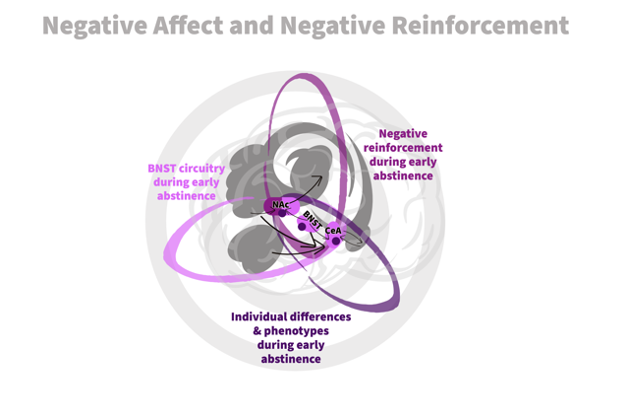Project 3
Targeting the neural circuits controlling negative reinforcement to prevent alcohol seeking in males and females
In certain individuals suffering from AUD, alcohol taking and seeking is thought to be motivated by negative reinforcement, where individuals continue consuming alcohol to avoid the negative internal states that are triggered by abstinence.
While a large body of work has outlined the precise brain regions, cellular populations, and neural circuits that underlie these affective states and their effects on behavior in rodents and humans, studies have not explicitly focused on the circuits controlling negative reinforcement itself — the action of avoiding aversive stimuli.
Using operant tasks where animals emit operant responses to avoid negative outcomes, we will:
- Use in vivo microendoscopy to outline the cell-type specific neural activity signatures that underlie the negative reinforcement in males and females.
- Determine how these signatures are changed by alcohol exposure and abstinence in males and females.
- Determine molecular effectors within these populations in both sexes using cell-type specific transcriptional profiling.
Together, the Vanderbilt Alcohol Research and Education Center (VAREC) allows for an integration of research aimed at collaboratively answering how AUD associated phenotypes emerge using precision neuroscience approaches.

Project Lead
-
Erin Calipari
Assistant Director, VAREC

875 Light Hall
2215 Garland Ave.
Nashville, TN 37232
Email

